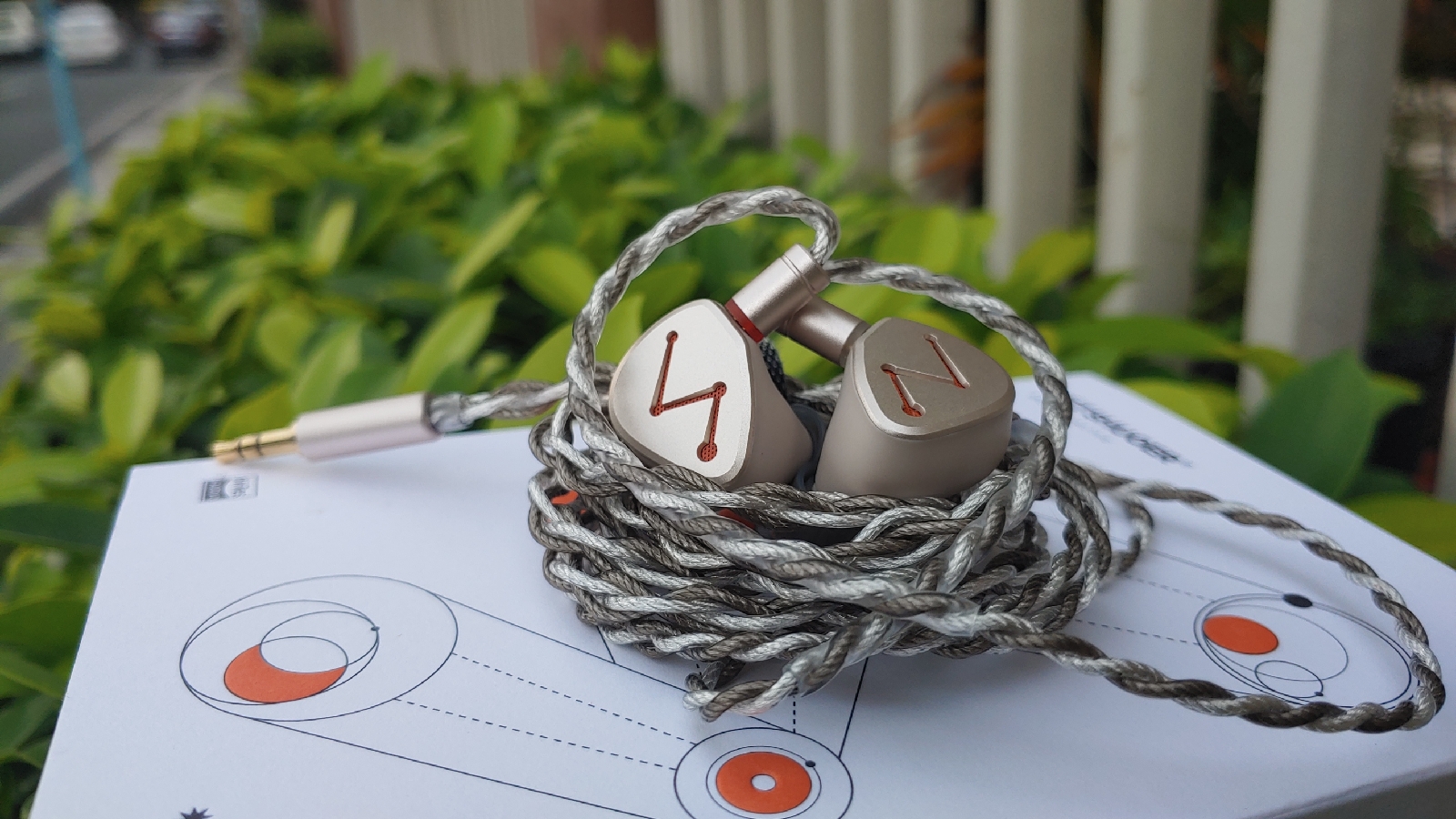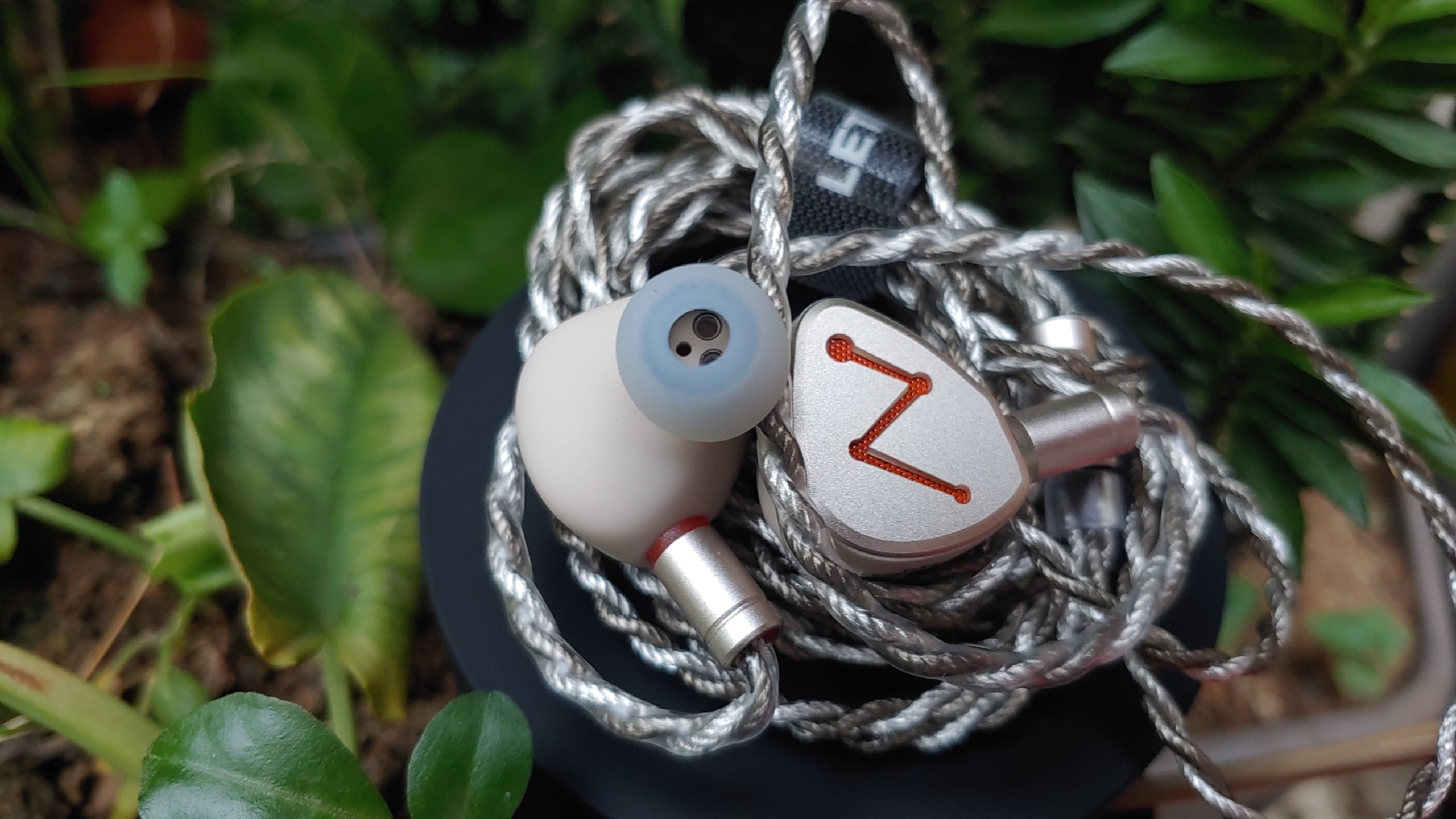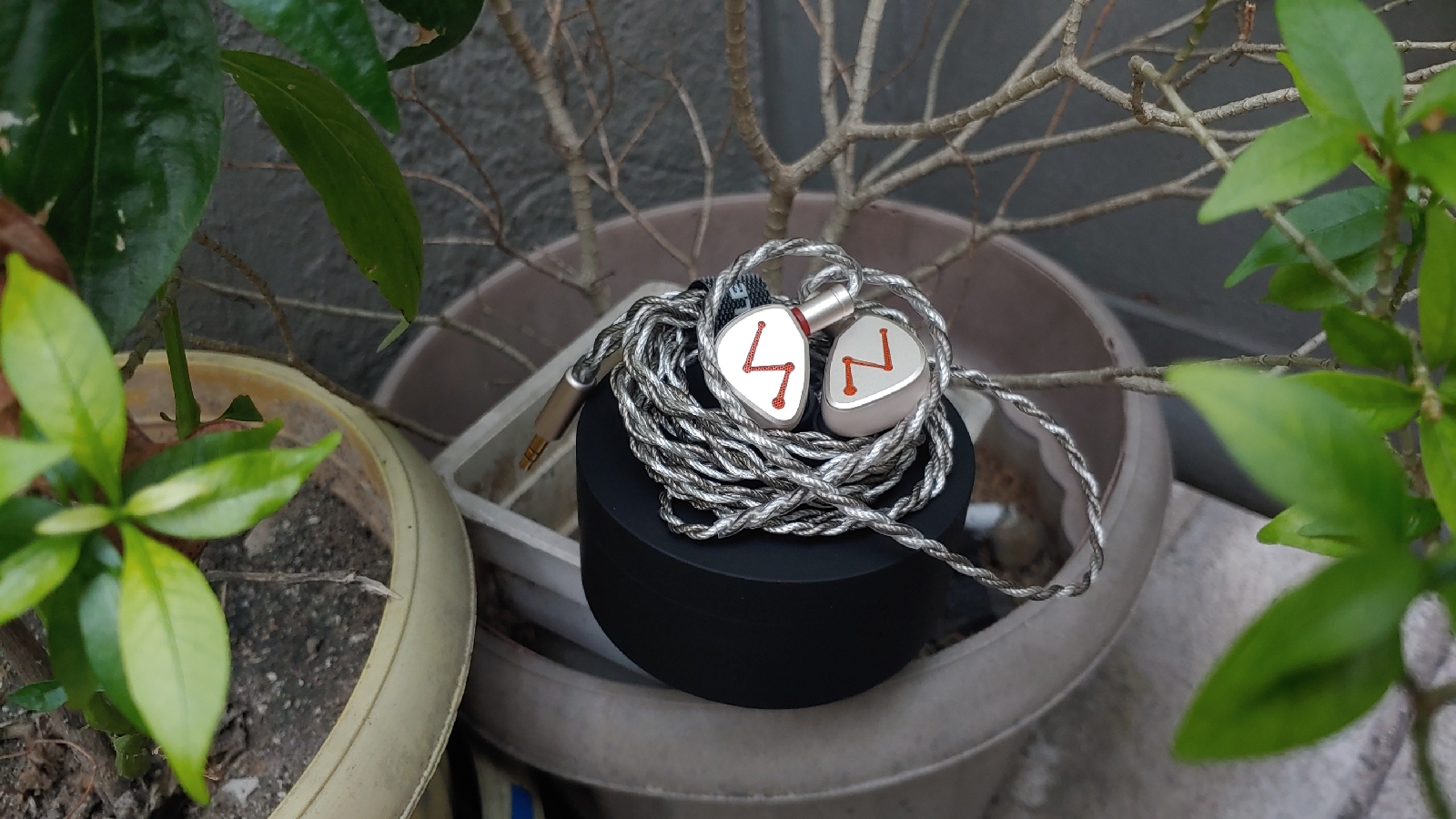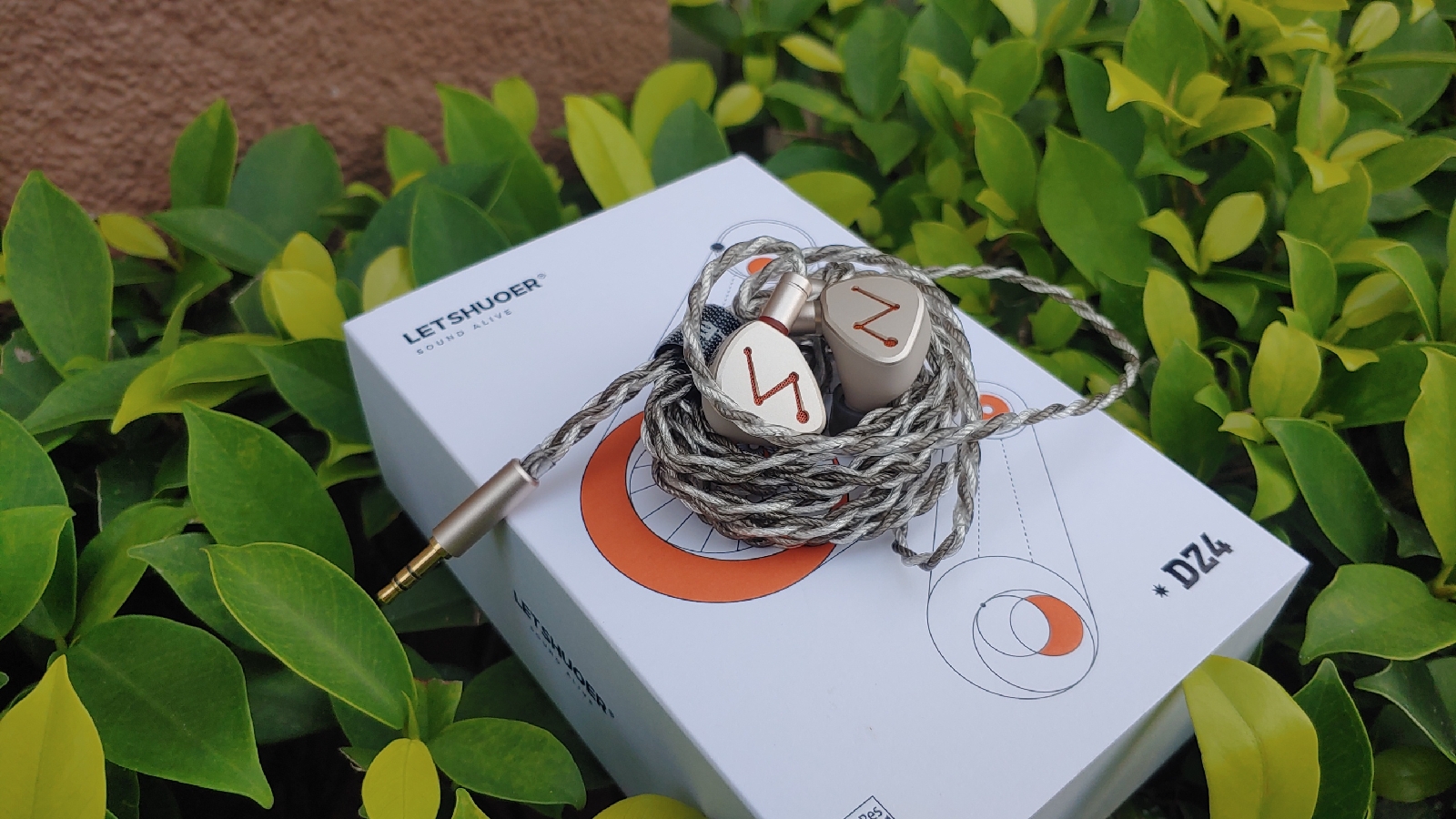LETSHUOER DZ4: Maximising Its Drivers' Full Potential
“Never tell people how to do things. Tell them what to do and they will surprise you with their ingenuity.“
--General George S. Patton, United States Army General
That's how I perceived LETSHUOER's philosophy on striving for the success and pushing some innovation in their products as this quote remind on them. No need further to introduce the LETSHUOER again as I already did a lot of impressions, reviews and assessments on their products and all of their products are impressive as usual and have their own tonal character and distinctive design viewpoint.
This is LETSHUOER's latest model product for the entry-level segment, The LETSHUOER DZ4, it has an interesting driver set-up as it has three (3) dynamics drivers and single passive-radiator on each side. The three (3) dynamic drivers are of a titanium dome micro dynamic driver type and all are of the same dimensions of 6mm and each of them will handle a specific frequency range. The passive-radiator concept in IEM is quite an interesting implementation as it is usually found on a loudspeaker enclosure. This is not the first one as there are some products with this kind of implement like a certain IEM and headphone. The passive-radiators aren't really electrically charged, instead they are powered by air pressure from other active transducers and its principle is to trap sound waves generated from active transducers to create a resonance effect to add more depth on pitch and improve reverberations. There is another benefit on implementation of PRs as it somehow lessens the constant motion on woofers that is akin to dampening effect as it will give a longevity and less chances of degrading the quality of active drivers due to constant motion.
The drivers and the single passive-radiator were also connected into four (4)-way acoustic tunes with a tiny bi-channel crossover circuit for less distortion and cleaner sonic quality. These components are encapsulated in a 3D printed acrylic resin, UIEM-style shell chassis. It has a CNC-milled, matte-finish aluminium alloy faceplate with a zig-zag pattern with each point probably serving as vent holes that makes it somewhat an open-backed design. Like all LETSHUOER products, it uses a proven 2-pin connector as its detachable mechanism for cable swapping.
The fitting is quite comfortable as these sets rest well in my lugholes as it encompasses to give a good passive noise isolation to filter out some external noises coming from the outside environs. I can wear them for a long listening session and I don't feel any driver flexes that might be annoying during insertion or any motion.
The stock cable included on LETSHUOER DZ4 is quite good. It was carefully braided and has a sufficient thickness to give a solid yet light and flexibility. It is made of 4-core, 216 strands of monocrystalline silver plated copper wirings to deliver a better conductivity to have seamless transmission of electrical signals. And it has a gold plated 3.5mm single ended as its termination plug.
Like all LETSHUOER products, each of their product packaging has its different approach from the amazing unboxing experience with Cadenza 12 to a more simple yet satisfying product presentation of their Galileo. The LETSHUOER DZ4 takes a different approach as it has a more modest yet logical on its product presentation as we check some of its contents.
Here are the following inclusions inside the box:
■ a pair of LETSHUOER DZ4 IEMs.
■ bi-coloured braided stock cable.
■ a disc-shaped ear tips organiser plate.
■ a rubberised, circular hard plastic IEM container.
■ three (3) pairs of vocal ear tips of different standard sizes.
■ three (3) pairs of balanced ear tips of different standard sizes.
■ some paperworks like instruction manual, contact card with QR codes, warranty card and a q.c stub.
The LETSHUOER DZ4 can be powered up efficiently with just a decent amount of power output from usual portable multimedia devices like smartphones and tablets. But putting it on devices like DAPs and USB DAC/amp dongles with better power output will have a noticeable and significant improvement particularly on dynamics and ambience.
As to determine its tonality and tuning, the DZ4 has a mild-U shaped tuning to a balanced-neutral sound profile as I was able to determine its slight elevations and downward slopes on its frequency range to compensate as it delivers a well-balanced tuning.
LOWS/BASS:
The low frequencies of LETSHUOER DZ4 is slightly elevated just to display a sufficient slam, incisiveness and depth while retaining its clean and sufficiently separated bass response from other frequencies.
The sub-bass presence was observable as I was able to hear clearly and felt those reverberations and rumbling sound coming from low toned bass guitars, drum machines and synthesisers especially on tracks from music genres like synth-pop, classic rock, R&B and old school hip-hop. Mid bass has an ample texture. Mid-bass is equally presented and well-balanced with the sub-bass as it was able to give an ample note weight and definition on mid bass focus instruments like bass drum kicks, bass guitars, violas on its lowest register and bass baritone vocals. Bass guitars sound have a resonant and sustaining tone to produce a sufficient roar on bass lines as I listen to Steve DiGiorgio and Les Claypool, while violas on hitting their bass note have this warm and reedy sound to give that eerily sombre feel. Bass drum kicks have thudding and resonant sound as it hits its deepest tone. On bass-baritone, singers like Barry White and Peter Steele have sufficient depth, dark and woolly in nature on their distinct gravelly vocals.
MIDRANGE:
Well-balanced, neutral, dynamic and has enough warmth as it presents a solid, more density on note weight on all vocal types and tonal characteristics on different instruments, those my initial impression on how I perceived and those characteristics still retains.
Vocals on both genders are well-rendered as they sound very natural and almost tonally accurate but there are some minor gripes on which I will address later. On male vocals, baritones have a good heft and power as they deliver a lush and adequate warmth as I listen to Lenny Kravitz and Eddie Vedder. Tenors have those brassy and bright tones as I clearly hear those vocals from the great Three Tenors; Pavarotti, Carreras and Domingo on opera, then Justin Timberlake and Robert Plant on modern pop and classic rock. On countertenors, they have this captivating and pleasant vocal quality as they sound velvety and poetic on their smouldering tones as I listen to Andreas Scholl on opera and King Diamond on the heavy metal scene.
As for female vocal types, contraltos have its distinct dark and chesty tones that gives a rich vocal qualities on singers like Annie Lennox and Tracy Chapman. Mezzo-soprano vocals are smooth, velvety and full as I find them sweet and harmonious as I listen to Andrea Corr and Sharon Den Adel. On soprano vocals, this is where I was able to differentiate the limitations due to its intended tuning and probably, the limited capacity of its driver performance. The dramatic and soubrette soprano types were able to execute well as they sound natural with their silkiness and silvery vocal characteristics of Mariah Carey and Alison Krauss, but on lyrical and coloratura types like Tarja Turunen and Diana Damrau, this is where I find the limitations on DZ4's drivers as it is less energetic and insufficient air on projecting those high tonal pitches when they belted it out but at least it has a decent gleam which is not bad at all. (Try to listen the Aria: Der Hölle Rache kocht in meinem Herzen by Mozart)
On instruments, all of them sound organic with the particular tones that we are familiar with. On strings like guitars (acoustic ones) and violins, the former have more midrange-y with a tad zesty on its tone while the latter have a lustrous and a flute-like sound. Brass like trumpets, trombones and horns, trumpets have a full, brilliant and rounded sound while trombones have mostly a taut and "heroic" sound characteristics and then horns have these sonorous and earthy sound in them. Woodwinds particularly on flutes and pipes have these rich and penetrating sound on them while saxophones have a reedy and warm sound on them. I tested on brass and woodwinds (with the exception of saxs) on some tracks like Luftwaffenmusikkorps band's rendition on Der Hohenfriedberger Marsch, Dvorak's A New World by New York Philharmonic Orchestra and Stockholm Conservatory Orchestra's Mozart's Requiem: Dies Irae. On percussives, toms drums have a hard, resonant and menacing sound, while snare drums have a shuffling and a more noticeable rustling sound on them. And last but not the least, Chordophones instruments like celestas and piano, celestas have a sweet, lustrous and mellow sound while piano have a tad warmer with just sufficient shimmer tone on them.
HIGHS/TREBLE:
The overall treble quality of LETSHUOER DZ4 that it is well-balanced, with enough shimmer due to a slight boost on the upper mids just give a considerable amount of detail and clarity on female vocals and percussives while retaining a smoother and evenness response probably due to gradual down slope from the upper mids to brilliance part of treble region. That smoothness will also give a non-sibilant and harsh tuning that treble sensitives can take it.
For a micro dynamic driver, it is commendable that despite of its physical limitation, it was able to deliver a decent amount of air and sparkle though not the most expansive one but at least it has an enough sparkle to give shimmer and crisp sound on cymbals. Hi-hats fares even better on this one on how it reproduce its distinct chick sound.
SOUNDSTAGE, IMAGING AND OTHER TECHNICALITIES:
The DZ4 projects a rather average to above average sound/speaker stage dimensions, an average width on lateral point to point, a decent height reach and a more immersive depth distance from front to rear which give me a more enveloping head room.
With its immersive presentation, it has 3D-like imaging presentation where I was able to locate and perceived a right position of instruments and vocals. It also has good spacing and gaps on separation of specific instruments and tones. But here is a quite a surprise. This is the first time where layering capabilities on either single DD or multiple DDs in an entry-level segment that are properly exhibited as it was able to perceive a decent stacking of tonal layers either frequeny or dynamic layering that it handle some of the most complex tracks from multi-instrumental movie scores, orchestras and jazz ensembles at satisfactory level.
Three drivers along it passive radiator driver were able to perform a very cohesive rate as all active drivers carry out a snappy and faster transient responds without any hitches that it might distorts and out of phase issue.
It has a homogenous and emphasis on macro-dynamics while it has decent micro-detail retrieval as it was able to extract a decent amount of nuancies and subtleties of background from audio tracks though not the sharpest but at least it doesnt have blunted definition.
The overall tonality of DZ4 is closer to sound very natural as possible it was able to playback an almost faithful reproduction.
PEER COMPARISONS:
QKZ X HBB KHAN
● Like the DZ4. It has an all-dynamic driver albeit it only has 2 with different type of diaphragm and the dimensions of each driver differs on sizes. Khan have an unoriginal shell design that eerily similar to some CCA models but it has a more solid built quality. As for inclusions and product packaging, compared to DZ4, KHAN is quite inferior and meagre in quantity.
● Tonality-wise, it has more V-shaped which make it more coloured sounding, it has more authoritative bass response, more recessed and yet warmer midrange and an almost dark sounding treble thats devoids shimmer that affects the quality detail and clarity. On technicalities, it has average width sound/speaker stage, a usual two-dimensional stereo presentation, a poorly executed layering capabilities and a middling resolution capabilities.
7HZ LEGATO
● Like the KHAN, it has a dual driver set-up with different sizes as it has large 12mm dynamic driver that was supported by a smaller 6mm. It also noted that it has some capacitor to improve further the sound quality. As to compare between the shell chassis of DZ4 and LEGATO, LEGATO's shell is made of light yet solid aluminium alloy which make it more resilient and durable compare to a shell chassis of DZ4's made of composite materials. It also have a good quality amount of included accesories.
● Again on tonality, LEGATO sound profile has a more warmer, more coloured, V-shaped tuning that reminds you on vintage speakers that sounds very analogueish. On bass response, heres is an analogy, if a DZ4 is the MG42 machine gun, then the LEGATO is the Mörser 18 heavy howitzer. DZ4 has rapid, incisive bass response then LEGATO has very authoritative and bombastic bass, it has a more recess and yet warmer to give a denser note weight on midrange and a smoother and a tad darker treble response. On technicalities, it is very similar to the aforementioned KHAN albeit it has more solid and vivid macro-dynamics.
In a few days on continuous usage of this device, I can't still believe on how LETSHUOER be able to release such product that despite of limitations of micro dynamic drivers, They are able to execute a proper implementation of micro dynamic drivers on this device with its unusual application of passive-radiator to deliver an unexpected remarkable sonic performance.
LETSHUOER DZ4 is somewhat a rarity when it comes to tuning in under US$100/£79 as it is one of the few sets that focuses on a more balanced-neutral sound signature amidst to a massive crowd of other sets that has a commonality type of tuning, either a Harmanish type or a V-shaped sound profiles which make it exudes stagnation on entry-level segment. LETSHUOER DZ4 truly stands out with different perspective and philosophy on how will it make them agreeable.
LETSHUOER DZ4 is now available online, check out the unaffiliated link below:
And also, If it happens that you are currently situated here in the Philippines, you can check other LETSHUOER products by visiting the Egghead HiFi Gallery Store at Shangri-la Plaza located in EDSA Manduluyong. Check out their official Facebook page HERE for more information.
Here are my previous reviews on other LETSHUOER products:
◆ LETSHUOER GALILEO (First impressions)
◆ LETSHUOER EJ09 (First impressions)
◆ LETSHUOER CONDUCTOR (First impressions)
SPECIFICATION:
MODEL: LETSHUOER DZ4
IMPEDANCE: 12Ω
SENSITIVITY: 104dB
FREQUENCY RESPONSE: 20Hz – 40KHz
CABLE LENGTH: 1.25M
PIN TYPE: 2-PIN CONNECTORS
PLUG TYPE: 3.5MM
DRIVER UNIT(S): (3) DYNAMIC DRIVER + (1) PASSIVE-RADIATOR DRIVER
PROS:
△ Affordable for audio enthusiasts who are in budget who wants an incremental improvement of tonal and technical performance from ultra-budget sets.
△ Lightweight yet rigid composite shell chassis.
△ High quality stock cable.
△ Two types of good quality ear tips to choose from.
△ A circular-shaped IEM case for better storage.
△ a balanced-neutral tuning which is quite unusual under US$100/£80.
△ Clean and punchy bass response
△ Well-balanced, sufficiently texture midrange with adequate details.
△ Smooth treble response with sufficient sparkle.
△ Holographic imaging aspect.
△ Remarkable layering capability especially for a dynamic driver(s) set.
△ Precisive coherency performance of its triple micro dynamic drivers with its supporting passive-radiator driver
CONS:
▽ This is not for listeners who wants a more coloured tonality.
▽ Basshead's bane bass response.
▽ Wishing for a more spacious sound/speaker stage.
▽ Treble air is still meagre in my opinion due to the physical limitation of micro dynamic drivers.
Some Tracks Tested: ( * = 16-bit FLAC, ** = 24-bit FLAC, *'* = MQA, '*' = DSD, *'= .WAV)
Alison Krauss -When You Say Nothing At All *
Jade Wiedlin - Blue Kiss**
Led Zeppelin - When The Levee Breaks **
Mountain - Mississippi Queen *
Queen - Killer Queen **
Guns N' Roses - Patience *'*
Eric Clapton - Tears in Heaven '*'
Sergio Mendes- Never Gonna Let You Go '*'
Pearl Jam - Daughter **
Roselia - Hidamari Rhodonite *
Assassin - Fight (To Stop The Tyranny)*
Celtic Frost- Visual Aggression *
New Order - Blue Monday *
The Corrs- What Can I do (unplugged version) *
Jimi Hendrix Experience - Voodoo Child *
The Madness- Buggy Trousers *
Metallica - Motorbreath **
Mariah Carey- Always Be My Baby *
Destiny's Child - Say My Name *
Malice Mizer- Au Revoir *
Mozart - Lacrimosa *
New York Philharmonic Orchestra - Dvorak- Symphony 9 " From the New World." *
Eva Cassidy - Fields of Gold (Sting cover)*
Michael Jackson - Give In To Me *
Exciter - Violence and Force *
Diana Krall - Stop This World **
Debbie Gibson - Foolish Beat *'*
The Sisters of Mercy – Lucretia My Reflection**
Suzanne Vega – Luka **
Lauren Christy – Steep *
Ottoman Mehter - Hucum Marsi *
Diana Damrau - Mozart: Die Zauberflöte*
P.S.
I am not affiliated to LETSHUOER nor receive monetary incentives and financial gains as they provide me a review unit for an exchange of factual and sincere feedback from yours truly.
Once again, I would like to send my gratitude to IVY GAO for providing this review unit. I truly appreciate their generosity and trust towards me and other reviewers.






















Comments
Post a Comment